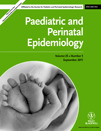Stillbirth Collaborative Research Network: design, methods and recruitment experience
Summary
Parker CB, Hogue CJR, Koch MA, Willinger M, Reddy UM, Thorsten VR, Dudley DJ, Silver RM, Coustan D, Saade GR, Conway D, Varner MW, Stoll B, Pinar H, Bukowski R, Carpenter M, Goldenberg R for the Stillbirth Collaborative Research Network. Stillbirth Collaborative Research Network: design, methods and recruitment experience. Paediatric and Perinatal Epidemiology 2011; 25: 425–435.
The Stillbirth Collaborative Research Network (SCRN) has conducted a multisite, population-based, case–control study, with prospective enrolment of stillbirths and livebirths at the time of delivery. This paper describes the general design, methods and recruitment experience. The SCRN attempted to enrol all stillbirths and a representative sample of livebirths occurring to residents of pre-defined geographical catchment areas delivering at 59 hospitals associated with five clinical sites. Livebirths <32 weeks gestation and women of African descent were oversampled. The recruitment hospitals were chosen to ensure access to at least 90% of all stillbirths and livebirths to residents of the catchment areas. Participants underwent a standardised protocol including maternal interview, medical record abstraction, placental pathology, biospecimen testing and, in stillbirths, post-mortem examination. Recruitment began in March 2006 and was completed in September 2008 with 663 women with a stillbirth and 1932 women with a livebirth enrolled, representing 69% and 63%, respectively, of the women identified. Additional surveillance for stillbirths continued until June 2009 and a follow-up of the case–control study participants was completed in December 2009.
Among consenting women, there were high consent rates for the various study components. For the women with stillbirths, 95% agreed to a maternal interview, chart abstraction and a placental pathological examination; 91% of the women with a livebirth agreed to all of these components. Additionally, 84% of the women with stillbirths agreed to a fetal post-mortem examination. This comprehensive study is poised to systematically study a wide range of potential causes of, and risk factors for, stillbirths and to better understand the scope and incidence of the problem.




